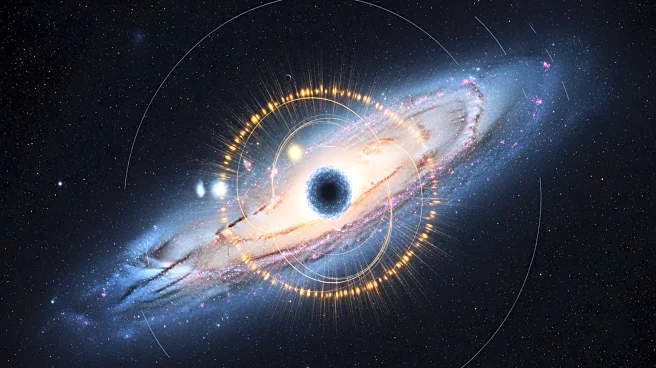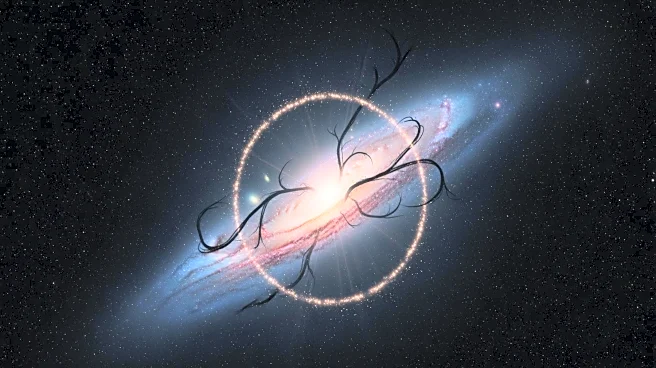What's Happening?
New simulations suggest that a faint glow at the center of the Milky Way could be a signature of dark matter. Led by Moorits Muru from the Leibniz Institute for Astrophysics Potsdam, the study indicates
that dark matter near the Milky Way's core may not be spherical but rather flattened, resembling the pattern of gamma rays observed by NASA's Fermi Gamma-ray Space Telescope. This glow, first detected in 2008, has been attributed to either dark matter particles or millisecond pulsars. The simulations show that the shape of dark matter aligns with the gamma-ray pattern, suggesting dark matter as a potential source.
Why It's Important?
Dark matter constitutes about 27% of the universe's matter, yet it remains undetected directly. Identifying its presence would be a monumental breakthrough in cosmology, providing insights into the universe's structure and evolution. The study's findings could help resolve the longstanding mystery of dark matter and its role in galaxy formation. If dark matter is confirmed as the source of the gamma-ray glow, it would validate theories about weakly interacting massive particles (WIMPs) and their interactions.
What's Next?
The Cherenkov Telescope Array Observatory, set to begin operations in the late 2020s, could provide higher-resolution observations to distinguish between dark matter and pulsars as the source of the gamma-ray glow. Additionally, gamma-ray observations of dwarf galaxies may offer further evidence. These efforts aim to provide definitive answers about dark matter's role in the Milky Way and beyond.
Beyond the Headlines
The quest to detect dark matter is one of the most challenging and exciting pursuits in modern physics. The potential discovery of dark matter's signature would not only solve a major cosmic mystery but also enhance our understanding of fundamental physics and the universe's composition.











